world war ii
[Ed-Seth: Dr. Sap found the archival footage at 2 a.m. last night and we threw this together today]
[via UM Bentley Library’s program database, which is currently offline for some reason]
If you think Michigan State and Michigan hate each other now, you should see how ugly it got 75 years ago. Michigan and Michigan Agricultural formed an early rivalry. It was a big enough deal by 1907 that when the Big Ten banned its members from playing nonconference games, Yost (for this and other reasons) preferred to remove Michigan from the conference entirely rather than agree to never play Michigan State, Ohio State, or Notre Dame (or in a Rose Bowl) ever again.
The series was of course dominated by (and nearly always played at) Michigan but for a four-year stretch from 1934-’37. 1930s-40s MSC was the Ole Miss of its day. In a time when conferences did most of the (and not a particularly great job of) regulating amateurism, State’s non-conference affiliation was a massive loophole. Jim Crowley, one of Notre Dame’s “four horsemen” and his successor, another Domer named Charlie Bachman, brazenly flouted NSC (the predecessor to the NCAA) rules to put MSC on the national stage. Michigan fans, of course, pointed this out at every opportunity, though Harry Kipke was no saint before Yost finally reined him in (Michigan went 12-22 after winning back to back national championships in ’32 and ’33).
Fast forward to September 1941. With Europe deeply embroiled in World War II and the United States feeling the inevitability of getting drawn in, tensions were quite high, not just around the world, but in the state of Michigan. It’s a huge and probably false step to claim that Michigan-Michigan State mirrored the urban/rural political battles of the day; it’s not one to say that a lot of fans on both sides perceived reasons to hate each other.
Although Pearl Harbor was yet a few months in the future, despite strong political opposition from a largely anti-war nation, America had begun its mobilization. Students and players were already enlisting, and football players were allowed to transfer between schools (with immediate eligibility) to assist those colleges and academies. Already the great football programs of the 1930s were hemorrhaging men to the military. Army went 1-7-1 in 1940; in 1941 they went 5-3-1 and tied Notre Dame. In just a few years the service academies would be perennial national powers and Michigan State wouldn’t even field a football team.
On September 4, 1941, a German U-Boat, unprovoked, fired upon the USS Greer. A week later, President Roosevelt declared any German warship in “waters which America deems vital to its defense” to be fair game, and ordered the U.S. Navy to shoot any perceived threat on sight. On Friday, September 26th, the Military Police Corps was founded. On Saturday the 27th, Michigan hosted Michigan State College.
With the game tied 7-7 at the half, things got a little ugly as it appears that some of the fans and students poured onto the Michigan Stadium field and decided to mill around. One thing led to another and before you knew it, a donny-brook ensued! Fisticuffs and haymakers were thrown and then it was all out bedlam. It looked like this:
(found this on one of my DVDs)
Michigan ended up winning the game, 19-7.
-------------------------------
Much changed in the following year. The U.S. entered war on December 7, and opposition quickly melted into patriotic duty. The students and players were enlisting and football players were allowed to transfer between schools to assist those colleges and academies that were supporting the war effort. Michigan successfully lobbied to be one of those host schools.
From Brian Williams at the Bentley Historical Library:
"Football was a sport short on manpower, even with significantly relaxed eligibility rules. Many colleges were forced to drop intercollegiate football during the war, including Michigan State, which canceled its 1943 season."
"The government even asked Michigan to consider moving its games to Detroit for the 1942 season to conserve resources. As Michigan prepared to play its first wartime season in 1942, the application sent to prospective players reflected the new reality. The application asked candidates if they were registered under the Selective Service Act, what their classification was, and most important for the coaching staff, “When do you expect to be called?”
"One significant change for the 1942 football season was an overhaul of eligibility rules. Prompted by a loss of manpower through enlistment and the Selective Service draft, the freshman eligibility rule was waived. The rule revision that allowed freshmen to play also enabled soldiers and sailors stationed at military training bases to be eligible regardless of their previous experience. Many of the players on the military base teams had completed their college eligibility and a few had even played professionally."
Both teams once again squared off in Ann Arbor, literally and figuratively. Despite Michigan benefitting from the same wartime transfers that were ravaging MSC, the game was just as close as the year before, with the halftime score knotted at 0-0.
It seems like the students and fans once again poured onto the field, but this time things started out a little more amicably.
After trying to perform some sort of locomotion script, emotions got the best of everyone, even as the Michigan State band tried to continue their halftime performance.
Some of the Michigan cheerleaders tried to get everyone to chill, but to no avail.
The scene was this:
Michigan once again was the victor, winning the football game, 20-0.
The following year, with so many young men leaving East Lansing for more patriotic pursuits, Michigan State didn’t even field a football team, and the rivalry settled down.
Just seven members of the 1942 squad would still be in Ann Arbor by 1943, however they were replaced by an embarrassment of other teams’ riches coming to Michigan to train in the Navy’s V-12 program on campus. Among them were Minnesota star Bill Daley, and ten players from Wisconsin, including All-American Elroy “Crazy Legs'” Hirsch.
After the War, State dramatically expanded to accommodate G.I. Bill students. In 1947 they hired Biggie Munn, one of the pioneers in national recruiting, who quickly turned the rechristened Michigan State University Spartans back into a national elite. The Spartans would join the Big Ten in 1953 and Michigan’s star would fade for decades.
So while we celebrate the 75th anniversary of "The 1942 Backyard Brawl," let's try and have cooler heads prevail—especially with Saturday's game being played at night.
Our resident young obsessive WD found a list of all of Michigan's night games, dating back to—wait, 1944? That's right—in 2010 Greg Dooley of MVictors and Greg Kinney, one of the unsung heroes of HTTV (he finds us all those amazing old photos), pulled out details on one of the most unremarked remarkable events in American history.
It's remarkable for the context. This is World War II, remember. The invasion of Europe was stalled while waiting to see if Market Garden could get them into Germany via Holland, and otherwise the lines were about where they'd been entrenched in WWI. On September 6, with decreasing threat of invasion, the United States lifted the blackout rules, to a dim-out. Certainly any meaning of "dim" did not include shining stadium lights on a facility in a coastal city (Milwaukee) with 20,000 live targets in it. Regardless, Marquette apparently played several night games that year and throughout the war—I'd be interested if any historians know why this was cool when so much else in college football was subsided for the war (e.g. 1944 Michigan had to give up its spinning fullback—the QB of the unbalanced single wing—before the Ohio State game because he was called to duty).
The Michigan game being one of them was even weirder, and had to do with Michigan participating in a navy officer cadet program called V-12, and siphoning off V-12s, who couldn't leave the base for more than 48 hours, as football recruits. The time crunch meant an afternoon or night game, so they went night. They also used a highlighter yellow football (you can see it in the photos) that didn't work out so well: one ensuing newspaper article is the first known use of the term "fumbilitis."
BACK TO THE CORNER
Vincent Smith got so sick of MGoBloggers at the last event at Corner Brewery he decided to do it again at the end of the month:
WE WENT TO THE FINALS; WHERE'S THE RECRUITS?
This could be moot in a week (signs are good but when Kentucky's involved I halve all hope) but it does seem Michigan ought to be feeling the effects now of the championship run in the 2014-2016 classes. Walton, Irvin and Chatman were all pretty heralded recruits but their recruitments happened primarily when Zak and Stu were playing, and Michigan was making decisions on whom to pursue for 2015 before the having subs was crazy.
 |
| Things were going great until Kentucky whiffed on their top guys and Calipari started fishing in our waters with bait we won't touch because of rules based in 19th century class ideals. |
Michigan appeared to be in pole position for Devin Booker, Luke Kennard, James Blackmon, and Keita Bates-Diop at various points in those recruitments. In most of those cases, we lost out to a program that could promise as much in the tournament run department and not living like a pauper in the interim.
It sucks that none of those guys were Mitch McGary but McGary is a rare bird. Duke, Kansas, Kentucky, etc. can offer the same or better shot at a national championship, and don't have Michigan's squeamishness about paying them. Remember when Beilein was initially targeting those guys they were 100-250 dudes he saw more than that in.
Once you've blown up into a one-and-done, or at least the one-and-done schools are offering you the one-and-done package, the prestige of your degree matters way less than the degree to which your school is willing to accept the fact that you're there to try out for an NBA contract, and act accordingly. Blame the NBA's rule—created to prevent their teams from investing in busts before they've played against higher competition—for turning an age-old hypocrisy into a blatant thing.
It's not a sure thing—did you think we'd be here with Brown?—and once you're past the NBA locks Michigan can play ball. The difference between a top ten pick and, say, Caleb Swanigan, is an important one for the relatively clean programs. MSU got a top-20 post player because Tom Izzo has a long record of developing post players, and if you're starting at #20 your coaching is the difference between 1st or 2nd round grade in one or two (or four) years. If you watched that saga, you saw Purdue start in good shape and get strung along as the cute local school by the end. Beilein looks pretty good for any NBA wing or point guard—we'll never be Kentucky but we're probably not losing guys to Purdue, and that's something.
Etc. Update on 2015 non-conf opponents' springs. VT's secret to beating Ohio State' with 46 Bear concepts is cool, but outdated; Alabama tried that and got Vince Lombardi'd in the face. Worst damn band in the land. If you wanna meet the MGoDog he'll be at softball this weekend.
Your Moment of Zen:
How you like me now?
 (pic via Dawg Day Afternoon; need help finding the artist)
(pic via Dawg Day Afternoon; need help finding the artist)
This week I saw a photo of Jerryworld with its floor removed in preparation for 2013 tourney games, and I was reminded of the horrific things that must be buried in that dirt: the blood from a terrible Indian battle, bits and pieces of Woodson's collarbone (Superbowl XLV) and Denard Robinson's shoulder dislodged by Dee Milliner, perhaps the remains of five hookers.
Among various banners this basketball team has been asked to carry, one is a flag of redemption for Michigan's other sports. Given the site and the stage, sure why not the Alabama game too? The last trip to the Dallas/Ft. Worth/Arlington parking lot from hell dismantled every shred of hope and excitement for the last year of Denard. Now another former Big Ten coach who moved South and built a pro factory of mauling blue chips could end our association with Burke. ClearEyesFullHart starts with Bill Self's Illinois teams to preview tonight's Sweet 16 matchup with Kansas.
If this trip doesn't work, there may be an opportunity in 2015.
Excelius in'dome'ine. Say hello to stopthewnba, who received a points advance so he could post another attempt to get all statistical about the "domes hurt shooting" meme. This is of course super-relevant to Michigan in Jerryworld tonight since we're very much the shootier squad. The data haven't gotten any larger, however there's knowledge gained:
In four of the past five seasons, among Sweet Sixteen teams, one of the top two teams that increase their scoring average in the tournament over their regular season average made the Final Four. Similarly interesting is that in four of the past five seasons, one of the bottom two teams who score LESS in the tournament than their regular season average also made the Final Four:
I think I found the sampling bias in that: the further you go in the tournament the tougher defenses you will happen upon. The teams who score way above their normal rates those who "got hot" and they of course will go further, but good teams who are playing at the same level they did all year should see their scoring rate dip both due to the improved quality of defenses, and the fact that defenders are more rested thanks to all the advertising breaks. What sold this diary to me was the Excel sheet he attached, which gives me an opportunity to try out my new embedding plug-in:
That work? Sweet.
Pipkins Dominates the Michigan Drill. This was on the boards but it' the diary of the week, easy. Michael Scarn took the "Michigan Drill" I referenced last week and broke down how Ondre Pipkins did it right. The drill heavily favors the offense: a defender has to beat a blocker and contact the runner. A snippet:
As he makes contact with Bosch, Pipkins has already driven off his right foot as well, generating more power and force into Bosch. His hands have shot inside very quickly and, as we'll see, will allow him to control Bosch.
When I watched this earlier I didn't want to over-emphasize because I thought Bosch probably true freshman'd something. He did, but Pipkins was able to use his technique mastery to take advantage of that. Read this if you want to know what Hoke is talking about when he gets defensive liney.
Goal by goal. Relive the wonderful Saturday and ultimately disheartening conclusion to hockey's last-ditch CCHA run via your last goal-by-goal analysis until probably sometime next year (hopefully MGoBlueline will start in November). Lost with the championship game was the glory of the semifinal against Miami (NTM), which itself can be a pleasant memory to keep from an otherwise unpleasant season.
You should hold a hat ceremony too! I gave The Michigan Men's Football Experience the recruiting profile treatment:
If you are participating I highly encourage you to take the opportunity to mock the recruiting system as well.
Etc. LSAClassof2000 calculated the chances of various matchups occurring in this tourney, and you can follow the charts as games get decided; Ohio State's victory last night raised the likelihood of Michigan facing them in a championship to…I can't tell but it's like 5% or something. Sweet 16 Wallpaper by jonvalk. Blockhams uses a semicolon incorrectly.
[The Best of the Board, after the jump]
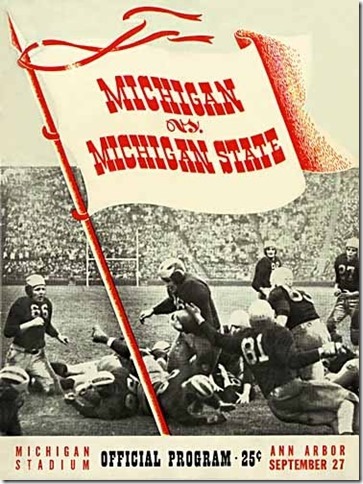
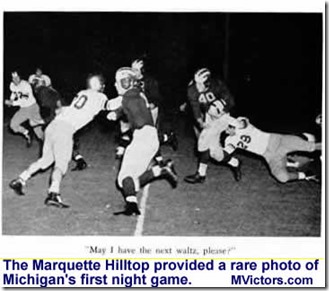
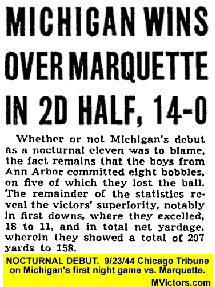

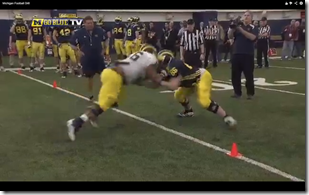
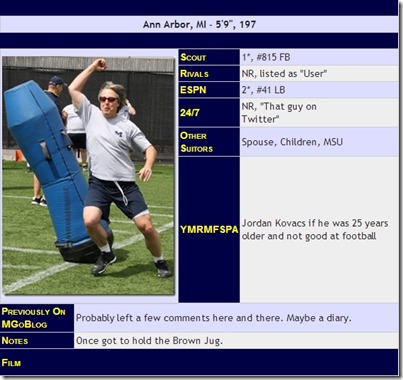
28